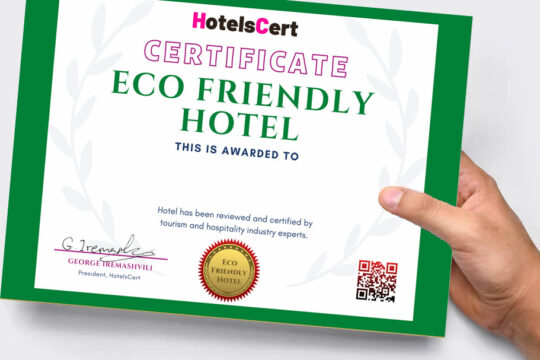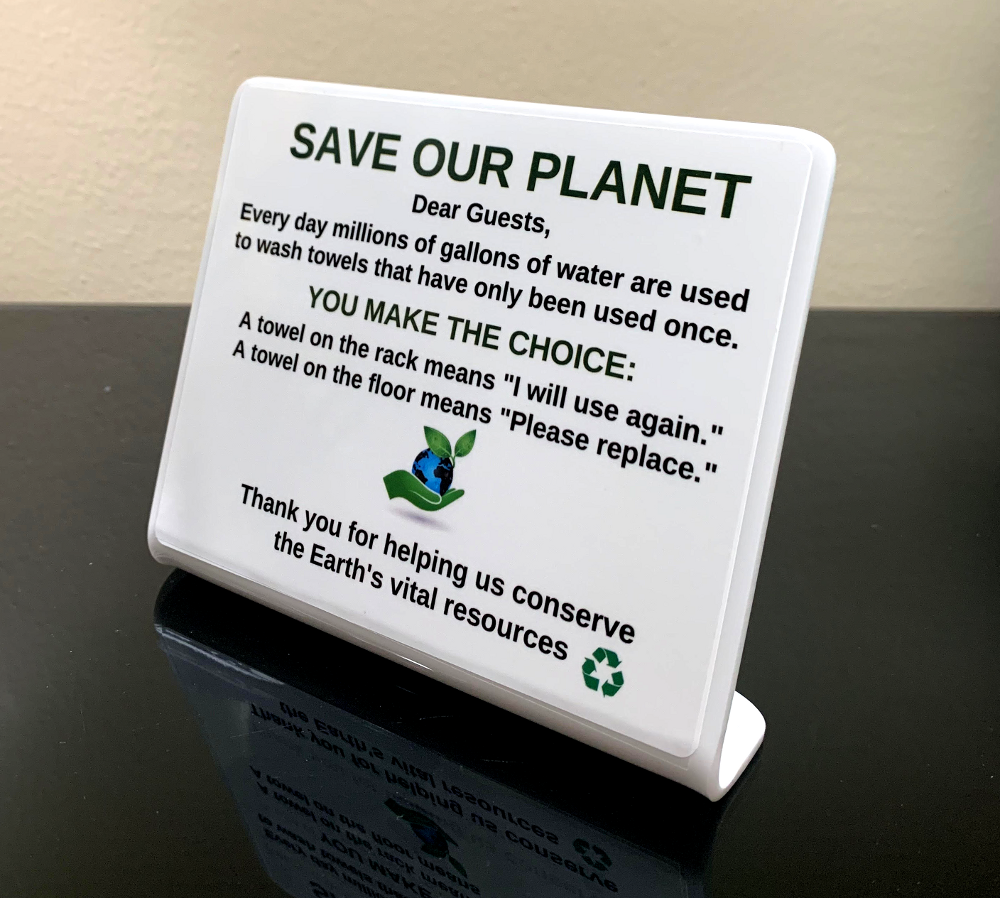Water sustainability is becoming increasingly important.
Hotels use approximately 1,500 litres per room per day on average. That amount exceeds even those of populations in water-scarce locations. In addition, hospitality venues sometimes use more than eight times as much water as the surrounding population.
Environmental damage and climate change are having serious consequences for the availability of water resources. Increases in temperature, as well as shifts in precipitation pattern and snow cover, have increased the frequency of flooding and droughts all over the world.
If the hospitality industry lowered its water consumption, it could provide major economic, environmental and social benefits.
Sustainability for Hotels
An eco-friendly friendly hotel is one that reduces the carbon footprint of both employees and guests. Further, eco-friendly hotels are designed to reduce greenhouse gas emissions, and thereby have a positive impact on the environment. Thus, they are helping to reduce global warming.
Indirectly, climate change affects water sustainability. As mentioned above, climate change disrupts weather patterns. This can cause limited water availability and contaminated water.
If the degree of climate change is reduced there will, in theory, be less natural disasters (floods) than otherwise. This, for example, prevents sanitation facilities and water sources from becoming contaminated.
Awards for Greenwashing?
As environmental issues come to light, guests put pressure on businesses to act and produce environmentally friendly services. Unfortunately this sort of external pressure can also lead to greenwashing. Greenwashing is when business advertises environmentally friendly practices but do not follow through.
Sometimes hotels advertise as “we are certified as environmentally responsible”. There are many issues with these sorts of ‘certifications’ or ‘awards’. Firstly, are they legitimate awards? Secondly, what are the credentials that qualify one for an award? Sometimes they don’t exist, or standards are very low.

Source: https://hotelscert.com/author/admin/page/2/
How Much Water Does a Hotel Actually Use?
Water accounts for approximately 10% of hotel utility costs. By decreasing water consumption, hotels could make drastic savings.
Hotels strive to make guests feel important, and unlimited access to water is a key feature. With generous showers, swimming pools, laundry services, water features, and very thirsty decorative gardens.
Moreover, many hotels simply do not monitor water consumption. This allows excessive amounts to be used with absolutely no management.
Also, hospitality industries pay twice for the water they use – both when they buy fresh water, and when they pay to dispose of the wastewater. Efficiencies with water use, on the other hand, produce long-term savings and sustainability.
That said, initial costs for sustainable water management can be quite expensive. Nevertheless, the savings offset original costs by around 28%.
What to look for
There are many tips and useful information on the internet on how a hotel reduces water use.
- Water conscious cleaning schedules
- Pool covers to reduce evaporation during off-hours
- Rainfall collection
- Native plants that require less human intervention and water-wasteful irrigation
Promote water sustainability to guests:
- Use of signage to promote reduced water use
- Towel drying racks to cut back on laundry

Source: https://www.room-signs.com/product/hotel-room-signs-save-our-planet-water-conservation-sign-hotel-room-sign-5-x-4-min-qty-30/67
There are many areas where water use is excessive in a hotel. Not surprisingly, most water is used in the guest rooms – specifically bathrooms. Showers account for 56% of water usage in guest rooms. Meanwhile, toilets account for 25%.
- Smart showers to limit the length of a guests shower
- Toilets with low-flush of dual-flush
- Low flow bathroom features that can reduce water usage by as much as 30%
hotel to home Water sustainability
Many of these water sustainability practices can also be implemented in your own home.
One of the biggest problems for water sustainability is leaking plumbing. Getting a thorough check is essential. In Australia, nearly 1 billion litres of treated water is lost everyday via leaks and cracked pipes.
Not only will consistent checks potentially lower water bills by around 10%, it saves water! To check for leaks there is a very simple process. Simply check your water meter before and after a two hour period. If the number reads the same before and after the two hour period – you are good to go!
Water sustainability is a hot topic at the THRIVE Project. Read our other blogs relating to water sustainability and more specifically – SDG 6. Sign up for our newsletter to continue your education in all that matters regarding social, economic, and environmental sustainability.






















